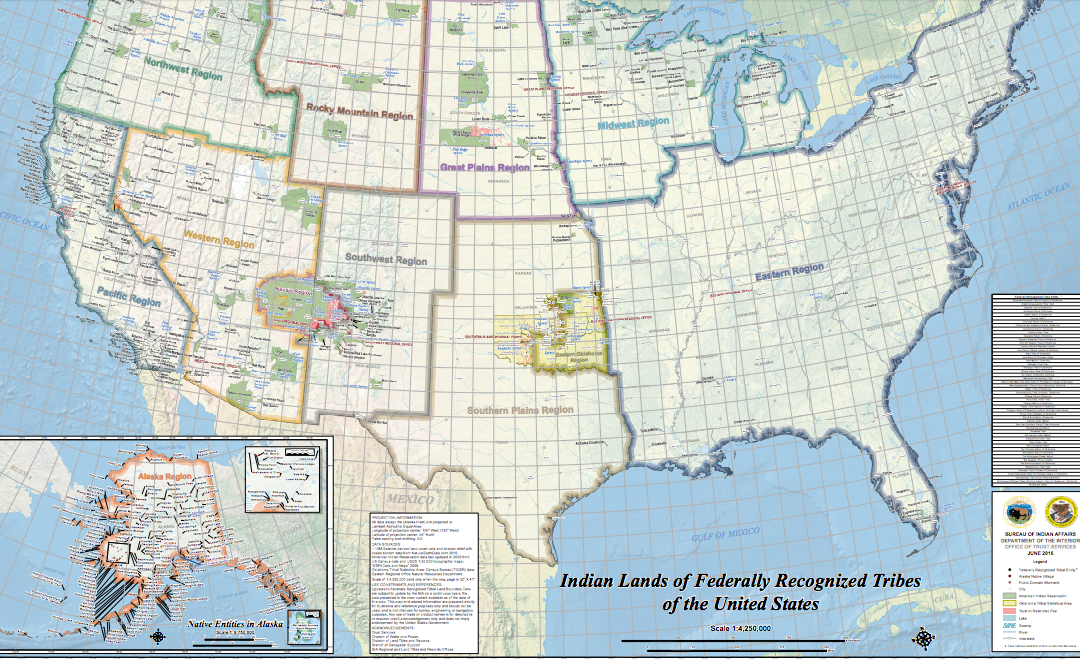
Hope In The Time Of Trouble: Why The Tribal Gaming Protection Network Matters
INTRODUCTION
Ten years ago, the National Indian Gaming Association Chairman, Ernest Stevens, Jr., put in place an initiative called the Tribal Gaming Protection Network. The TGPN was envisaged as an advisory body that could provide resources to protect Tribes from internal and external threats, and share information on cheats and scams.
The last decade has led to remarkable changes, within the Native American community and beyond. The Indian gaming industry has seen exponential growth, and while those early threats from fraudsters and tricksters remain, they have taken on more insidious forms, propelled in part, by advances in technology and communication. In addition, the security and humanitarian challenges of the day, combined with the successes of Indian gaming entities, make today’s threats far more potent than those of a few years ago.
The need to share information and resources, and protect a Tribe’s integrity, assets and public image in a rapidly shifting environment, are integral to a renewed effort by Chairman Stevens, Andrew Hofstetter (who took over as TGPN’s chairman last November), and the TGPN board of directors to make the organization the go-to place for Tribes needing help — information, networking, training, or protection. In a freewheeling conversation, Hofstetter spoke to The Biometrica Blog Team on what lies ahead for the TGPN.
The numbers are staggering. In 2014, the year for which the most current data is available, 243 Native American tribes operated more than 350,000 gaming machines and just under 8,000 table games at 489 gaming establishments across 28 U.S. states. According to Casino City’s Indian Gaming Industry Report, gaming revenue for 2014 almost touched $29 billion, accounting for more than 40 percent of all U.S. gaming revenue for the year.
Additionally, non-gaming revenue at Indian gaming entities almost doubled that gaming revenue. Overall, in 2014, Indian gaming facilities directly and indirectly accounted for about $95 billion in output, well over 700,000 jobs, more than $32 billion in wages, $1.7 billion in taxes (federal, state and local), and $8 billion in direct revenue sharing payments to federal, state and local governments.
But all this came later. To understand where those numbers came from, and why the TGPN’s role as an advocacy resource is so vital, it’s important to go back to the beginning of it all.
Birthing Pangs
The birth of regulated Indian gaming was painful and complicated, the product of a series of courtroom battles in which different Tribes stood their ground in their quest to be recognized as sovereign entities that could run gaming activity as an economic enterprise.
It was a battle that raged from coast to coast. Seven years before the birth of IGRA — the Indian Gaming Regulatory Act passed by the United States Congress and signed into law by President Reagan in 1988, to ensure a jurisdictional framework that would govern gaming on Indian lands — the Seminole Tribe of Florida won a major victory in the U.S. Court of Appeals for the Fifth Circuit.
The crux of the matter was this: In December 1979, the Seminoles opened a high-stakes bingo hall on their reservation in Hollywood, FL. Promptly, the local sheriff’s department, headed by Robert Butterworth, then Sheriff of Broward Co., FL, tried to shut it down.
By 1981, that battle had reached the Fifth Circuit in New Orleans (the state of Florida was part of the Fifth Circuit at the time). The appeals court upheld the district court’s ruling in Seminole Tribe v. Butterworth, essentially stating that since bingo was legal in the state, any move to stop the Seminole operation would be considered civil and not criminal in nature, and would therefore fall outside the purview of the state. The U.S. Supreme Court, in 1976, had already established the difference between the civil and criminal jurisdiction of a state with regard to Indian lands.
That October 1981 Fifth Circuit ruling is generally considered a landmark in Indian gaming history, because it opened up the immense economic potential of tribal gaming across the United States.
Six years later, the U.S. Supreme Court, in another historic ruling (California v. Cabazon Band of Mission Indians), reiterated the sovereignty of individual Tribes. It ruled that gambling on reservations could not be regulated by states, unless the state itself prohibited all forms of gambling, thus paving the way for IGRA.
IGRA, and the creation of the National Indian Gaming Commission (NIGC) as an independent agency focused on the regulation of Indian gaming, provided the legitimacy and oversight the nascent Indian gaming industry needed to take flight. Meanwhile, a few years previously, the National Indian Gaming Association, (NIGA) a nonprofit trade association now representing 184 Indian Nations and other nonvoting members, had already been formed, with a mission to “advance the lives of Indian people — economically, socially and politically.”
Why the Tribal Gaming Protection Network?
![Copyright Jeramie Lu Photography [www.jeramielu.com]; Courtesy Andrew Hofstetter](https://www.biometrica.com/wp-content/uploads/2020/04/Andrew-Hofstetter-212x300-1.png)
“The renewed push from late last year to early this year is because Chairman Stevens felt we also needed to update them in real time on information as it happens, on a variety of issues. We still do cheats and scams, but we’ve also dived into risk and liability, and we’re talking about regulating MMA sporting events.”
Hofstetter said that at the birth of regulated gaming, the IGRA, Tribes had the ability to have gaming facilities under certain conditions or laws in compacts. “With that and the success of Indian gaming, a whole new element came into play, with Tribes having slot machines, table games, and significant assets on hand. Under those circumstances, people began trying to experiment with fraud, fraudulent checks, fraudulent IDs, and counterfeit money. Tribes were experiencing cheats and scams in the table games and other departments. Everything from card counting to advantage play, to people actually taking cards and replacing them — stacking the deck if you will; Tribes were losing money.”
Hofstetter said that while some Tribes managed to bring in experts from Las Vegas to help them deal with situations, many did not have the resources, financial or human, to stop this. “Cheats and scams have also progressed significantly in the last 30 years, they are far more advanced now. We came about as a necessity to help educate tribes on one aspect. We’ve grown though, now you have tort claims, people trying to take advantage of Tribes through slips and falls, having some kind of (deliberate) injury on the property, trying to get a significant amount of money out of a Tribe.”
While dealing with cheats and scams remains on the radar, the TGPN is also looking at some specific areas of concern, including OSHA compliance, health and safety issues, and public protection — with a specific emphasis on active shooter situations and human trafficking. “We are working together on turning case studies into training programs to help educate tribes,” said Hofstetter. “We’re saying there are things you should be aware of, there are things that can keep you safe, there are red flags that should be shared within the industry.”
Gangs, Trafficking, Training, And Working Together
“Sharing data really does matter,” said Hofstetter. However, changing mindsets and making diverse groups understand that sharing information will not threaten a Tribe’s sovereign rights — even if there’s recognition within the Native American community of the urgency of the issues and the importance of shared resources — was never going to be an overnight task.
But Hofstetter believes the TGPN will increasingly become an invaluable resource to Indian Nations as they look to protect themselves and their assets from a range of modern day threats, and work with each other for the common good.
They are getting specific requests already — from a Tribe on the East Coast wanting a bid for an IT training program, to multiple requests on how to deal with gangs, active shooter situations, and human trafficking. These three, in fact, are the top areas of concern this year, going by the requests the TGPN has been getting. And there’s no question that there’s a need for urgent intervention on the part of Tribes, and lasting solutions.
A fascinating, if horrifying, five-part Al Jazeera America project in 2015 on Native American gangs, stated, “Compared with their African-American or white counterparts, Native American gangs and gang members are a relatively new phenomenon, tracing their roots back to the 1980s and ’90s, when city gangs introduced themselves to Indian Country and began recruiting.” The article laid the blame on a three-pronged issue: Historical Trauma, Federal Policy and Tribal Pride.
Other issues, centered around access to higher education and mental health services (a problem for other population subsets too) coupled with the rising drug use across the country, have also led to a renewed resolve to tackle a not-so-new problem that is quickly reaching epidemic proportions in Indian country: Human Trafficking. An article in Indian Country Today on Aug. 1, 2016, reported that a Northeastern State University study on methamphetamine use in tribal communities, found several disturbing trends, including organized gangs targeting tribal jurisdictions for both drugs and sex trafficking.
How Difficult Is Information Sharing?

© Digitalstormcinema | Dreamstime.com
While this is a work in progress, Hofstetter is optimistic that change is in the air. “When you have tribes with common concerns, you have tribes that will share information, even if it’s at different levels. We’ve also found that the case studies we help put together, information that is relevant, help protect tribes and their assets.”
As to sharing information with U.S. federal, state and local law enforcement, Hofstetter said that he’s been in gaming for 22 years, and there was a definite change in attitude, and the importance of working together.
“We have NIGA’s mid year conference and expo coming up at the Seneca Niagara in September. Active shooter situations are becoming more prevalent, and because we are getting numerous requests from Tribes on training related to such situations, we are focusing on that: Matters like how we survive, how we write our emergency plans, what policies need to be addressed. Some of our trainers are actual federal law enforcement officers; we’re bringing in the Department of Homeland Security [DHS] and the Federal Bureau of Investigation [FBI], and they are teaching, in tandem with us. That in itself demonstrates how our collaboration has improved.”
Additionally, Hofstetter said that while they had not addressed human trafficking in depth as yet, they would be doing so. The TGPN will look to work with the DHS, specifically ICE (U.S. Immigration and Customs Enforcement) on educating and training Tribes on preventing and dealing with human trafficking. “They [ICE] are the leading authority on the topic. Law enforcement is already in the loop because they’re our trainers.”
A Better Framework, A Stronger Future

© Jerry Coli | Dreamstime.com
“The TGPN is getting recognition now, people are starting to realize who we are,” said Hofstetter. “You’ve got to remember, we’re not a law enforcement body, we’re not the National Indian Gaming Commission [NIGC], we’re an advisory body that can help educate, train and provide information to Tribes, to help them protect their assets. We’re working toward certification training classes on health and safety, risk and liability, public protection and licensing, licensing and regulating Mixed Martial Arts [MMA]. We’re doing symposiums and background licensing and surveillance.”
Interestingly, because of a renewed interest in entertainment as a differentiator in a competitive casino landscape and a sudden profusion of what he called “one-stop shops that are looking partner with smaller casinos,” the TGPN is even putting together templates for MMA events, especially the smaller, less high profile ones.
“Those templates cover everything from sanctioning the event, to making sure the Tribe’s approved rules and regulations are detailed, and ordinances are approved,” said Hofstetter. “They also detail proper medical protocols, anti-doping needs, fitness and fight records, and fighter licensing and status and Tribes can customize them for their own use to cover risk and liability.”
The initiative, he added, comes down to this: “We’ll teach you, assist you, provide the information and documents you might need. After that, it’s up to you to carry it forward, through your rules and regulations, policies, processes, and your authority, to customize those teachings, pass them on, and share information that can help each other as best as possible.”
And because in the end, it’s all for the common good of future generations, he’s confident that together, they can build a regulatory landscape that will not only help shield communities from internal and external threats, but also help protect the assets, integrity and public trust of Tribes.